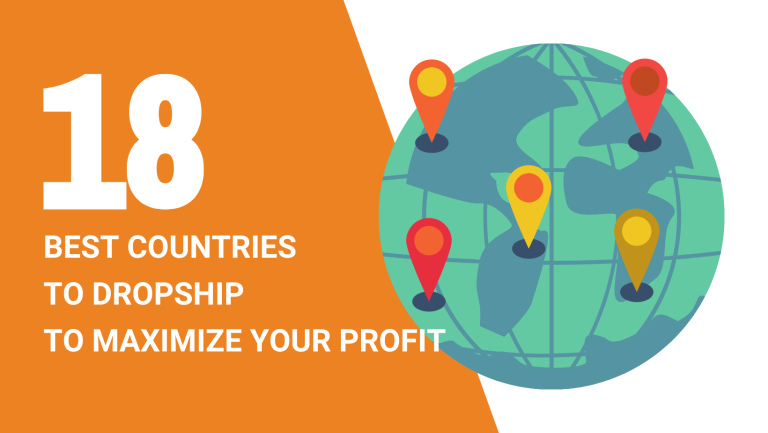Deciding which country you want to dropship to plays a pivotal role in the success of your business.
That’s because every region has its own trends. If a product is performing well in one market, doesn’t mean it wouldn’t fail in the other.
This is why before you proceed, you need to understand what are the best countries to dropship to and which niche you should target to maximize your profit.
And fortunately for you, we’ve compiled a list of 18 countries in the world that are currently a goldmine for dropshippers.
So let’s dive straight into it!
Key Takeaways
- Target countries with high GDP and internet penetration for better dropshipping success.
- Consider shipping costs and reliability when choosing dropshipping destinations.
- Explore both established and emerging markets to diversify your dropshipping business.
A List of the Best Countries for Dropshipping
1. United States

The United States stands as a prime target for dropshipping ventures. With its massive eCommerce market and tech-savvy population, it offers dropshippers unparalleled opportunities for growth and success.
The U.S. boasts an enormous eCommerce market worth $1,223 billion. Its number of online shoppers is expected to reach 333.5 million users by 2029. American consumers spend an average of $4,470 per year on online purchases.
The country’s robust digital infrastructure supports seamless online transactions. With an internet penetration rate of 84.5%, you can reach a vast audience effortlessly.
The U.S. ranks 6th globally for ease of doing business, making it an attractive option for dropshippers.
Pros
- Large, affluent consumer base
- High internet penetration rate
- Well-developed logistics and shipping infrastructure
- Strong consumer protection laws, building trust in online shopping
- English-speaking market, simplifying communication
- Diverse product demand across various niches
- High adoption rate of new technologies and trends
- Multiple reliable payment gateways available
Cons
- Intense competition in many product categories
- High customer service expectations
- Stringent product regulations and import restrictions
- Potentially higher advertising costs
- Complex tax regulations vary by state
- Increased risk of returns and chargebacks
- Seasonal sales fluctuations can impact profits
2. United Kingdom

The United Kingdom’s well-developed digital infrastructure and consumer trust in online shopping make it an attractive destination for dropshippers.
The UK boasts a population of 69.1 million, with an impressive 81.5% of people shopping online. This high percentage of digital consumers creates a vast market for dropshippers to tap into.
The average online spending per shopper in the UK is remarkable, reaching $2.58k, the highest in the world.
The UK’s eCommerce market is estimated at $280.55 billion in 2024 and is expected to reach USD 750.80 billion by 2029, showcasing its immense potential. With a GDP per capita of $47,300, UK consumers have strong purchasing power.
The UK ranks 8th in the World Bank’s Ease of Doing Business index, making it relatively straightforward for dropshippers to operate.
English being the primary language eliminates communication barriers, simplifying marketing efforts and customer service.
Pros
- Large, tech-savvy consumer base with high online shopping adoption
- Highest eCommerce spend per capita globally
- Well-developed digital infrastructure and payment systems
- English-speaking market, reducing language barriers
- Strong legal framework protecting both businesses and consumers
- High internet penetration rate
- Robust logistics network for efficient order fulfillment
- Cultural similarities with other English-speaking markets, easing market entry
Cons
- Highly competitive eCommerce landscape
- Strict consumer protection laws requiring adherence
- Potential Brexit-related complications for EU-based dropshippers
- High customer expectations for delivery speed and service quality
- Relatively high marketing costs due to market saturation
- Currency fluctuations may affect profit margins
- Stringent data protection regulations (GDPR) to comply with
3. Germany
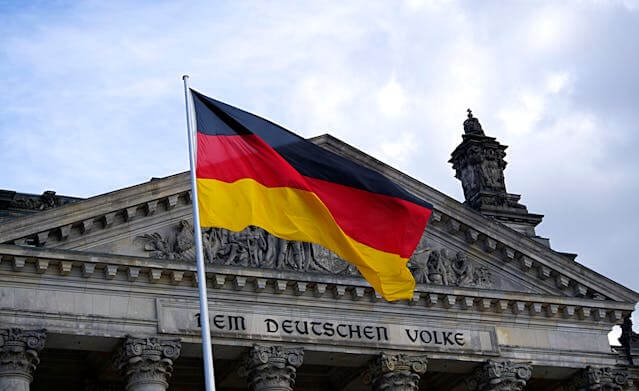
Germany boasts a thriving e-commerce market, ranking as the sixth-largest worldwide. The country’s online retail sector is projected to reach $98.31 billion in 2024 and is expected to reach $146 billion in revenue by 2029.
This impressive figure reflects the German consumers’ growing preference for online shopping.
With a population of 84.5 million, Germany has an internet penetration rate of 96%. An estimated 67 million Germans shop online, spending an average of $2.20k per person annually.
Germany ranks 22nd in the World Bank’s Ease of Doing Business index, indicating a favorable business environment. The country’s strong infrastructure and efficient logistics network further enhance its appeal for e-commerce operations.
Pros
- Large, affluent consumer base with high spending power
- Well-developed digital infrastructure and high internet penetration
- Strong preference for online shopping across various product categories
- Efficient logistics and delivery systems
- Stable economy and reliable payment systems
- Potential for expansion into neighboring European markets
Cons
- Strict consumer protection laws and regulations
- High competition in popular product niches
- Language barrier for non-German speaking dropshippers
- Cultural differences in marketing and customer service expectations
- Preference for local and established brands among some consumers
- Relatively high return rates compared to other European countries
4. Canada

Canada boasts a thriving eCommerce sector. With a population of 39.7 million, the country has 83% of its citizens shopping online. This high adoption rate translates to a significant customer base for dropshippers.
The Canadian eCommerce market size is impressive, projected to reach $65.55 billion in 2024, and valued at $104.40 billion by 2029. This figure is expected to grow, presenting ample opportunities for dropshippers to tap into.
Canadian online shoppers spend an average of $2.61k annually on digital purchases. This high spending power makes them valuable customers for your dropshipping business.
Canada ranks 23rd out of 190 countries in the World Bank’s Ease of Doing Business index. This favorable business environment simplifies operations for dropshippers targeting the Canadian market.
Pros
- High internet penetration rate (94.9%)
- Stable and growing economy
- English and French-speaking population, allowing for bilingual marketing
- Strong logistics infrastructure for efficient shipping
- Similar consumer preferences to the US, enabling easy market expansion
- High average household income ($87,800 CAD)
- Well-developed digital payment systems
- Strong consumer protection laws, building trust in online purchases
Cons
- Relatively small population compared to other major markets
- High shipping costs for remote areas
- Currency fluctuations affecting profit margins
- Strict customs regulations for certain products
- Competition from established local and international retailers
- Higher return rates compared to in-store purchases
- Seasonal demand fluctuations due to extreme weather conditions
- Bilingual labeling requirements for some products
5. Australia

With its strong economy and growing appetite for international products, Australia offers dropshippers a promising landscape to expand their business.
Australia’s eCommerce market is thriving, with 5 million online shoppers actively making purchases. The country’s high GDP per capita of $62,261 indicates strong purchasing power among consumers.
Internet penetration stands at an impressive 88%, ensuring a wide reach for online businesses.
Australian consumers are known for their willingness to try new products and embrace international brands. The country’s eCommerce revenue is projected to reach $37.10 billion in 2024 and $58.03 billion by 2029, showcasing significant growth potential for dropshippers.
Australians are comfortable with English-language websites, making it easier to market your products without language barriers.
The country’s stable political and economic environment also contributes to a favorable business climate for international sellers.
Pros
- High average online spending per shopper
- Strong and stable economy
- English-speaking market
- High internet penetration rate
- Well-developed logistics infrastructure
- Growing eCommerce market
- Tech-savvy population open to international products
- Favorable business regulations for online sellers
Cons
- Relatively small population compared to other markets
- High customer expectations for delivery times and service
- Strong competition from local and established international retailers
- Geographical isolation can lead to higher shipping costs
- Strict import regulations and customs procedures
- Seasonal differences may affect product demand
- Currency fluctuations can impact profit margins
6. France

France boasts a population of 66.5 million, with 74% of French consumers shopping online. The country’s eCommerce market is projected to reach $66.37 billion in 2024 and is expected to reach $97.96 billion by 2029. French online shoppers spend an average of $2.19k annually on digital purchases.
Internet penetration in France stands at 92%, indicating a highly connected consumer base. The country ranks 32nd in the World Bank’s Ease of Doing Business index, providing a favorable environment for dropshippers.
France’s GDP per capita is approximately $47,358, reflecting strong purchasing power. The fashion category dominates online sales, accounting for 37% of all eCommerce transactions.
Pros
- Large and growing eCommerce market
- High internet penetration rate
- Strong consumer spending power
- Developed logistics infrastructure
- Strategic location for serving other European markets
- Popularity of cross-border shopping
- Mobile-friendly consumer base
- Strong protection for intellectual property rights
Cons
- Competitive market with established local players
- Language barrier for non-French speaking dropshippers
- Strict consumer protection laws
- High expectations for customer service
- Preference for domestic brands in some product categories
- Complex tax regulations
- Potential impact of EU regulations on cross-border trade
7. Netherlands

The Netherlands boasts a thriving digital economy. With a population of 18.2 million, 87% of Dutch consumers shop online. The country’s eCommerce market is projected to reach $33.62 billion in 2024 and is expected to reach $51.84 billion by 2029.
Dutch shoppers spend an average of $3.19k per year on online purchases, one of the highest in Europe. The country ranks 4th in the EU for ease of doing business, making it attractive for dropshippers.
Internet penetration in the Netherlands stands at an impressive 98%, ensuring a wide reach for your online store. Mobile commerce is also on the rise, with 55% of online transactions made via smartphones.
Pros
- High internet penetration and tech-savvy population
- Strong logistics infrastructure for efficient deliveries
- High average online spending per shopper
- English widely spoken, reducing language barriers
- Stable economy and favorable business environment
- Growing mobile commerce market
- High credit card adoption rate for easy online payments
Cons
- Competitive eCommerce market with established local players
- Strict consumer protection laws and regulations
- High customer service expectations
- Preference for local payment methods like iDEAL
- Relatively small market size compared to larger European countries
- Potential for high return rates due to consumer rights
8. Sweden

Sweden boasts a thriving eCommerce sector with impressive growth potential. The country’s eCommerce market is projected to reach $13.30 billion in 2024 and 20.58 billion by 2029, showcasing significant opportunities for dropshippers.
With a population of 10.6 million, Sweden punches above its weight in online shopping. An astounding 80% of Sweden shop online, translating to about 8.1 million potential customers for your dropshipping business.
Swedish consumers are known for their high spending power. The country’s GDP per capita of $58,528 indicates a population with substantial disposable income. This economic strength translates into higher average order values for dropshippers.
Scandinavian countries, including Sweden, are accustomed to higher prices. This pricing tolerance can be advantageous for dropshippers, allowing for potentially higher profit margins on products.
Pros
- High internet penetration rate
- Tech-savvy population comfortable with online shopping
- Strong digital infrastructure
- High GDP per capita, indicating strong purchasing power
- Acceptance of higher price points
- Stable and transparent business environment
- English proficiency, reducing language barriers
- Advanced logistics and delivery systems
Cons
- Relatively small population compared to other European markets
- High customer expectations for quality and service
- Strict consumer protection laws and regulations
- Potential for increased competition due to attractive market conditions
- Higher operating costs, including shipping and returns
- Seasonal shopping patterns may affect year-round sales
9. Switzerland

Switzerland boasts a population of 9 million with a remarkably high GDP per capita of $90,932. This wealth translates into significant spending power for Swiss consumers.
The country’s e-commerce market is thriving, with 86% of the population shopping online regularly.
Swiss online shoppers spend an average of $2.51k annually on e-commerce purchases. This high spending rate is supported by widespread internet penetration, reaching 94% of the population.
Switzerland consistently ranks in the top 10 for ease of doing business, making it an appealing choice for dropshippers.
The Swiss e-commerce market is expected to grow at a steady rate of 10.53% annually through 2029. This growth potential, combined with the country’s political stability and strong currency, creates a favorable environment for dropshipping businesses.
Pros
- High average income and strong purchasing power
- Tech-savvy population with high internet penetration
- Stable economy and currency
- High trust in online shopping
- Efficient logistics and delivery infrastructure
- Low language barrier (multilingual population)
- Strong consumer protection laws, building trust in e-commerce
Cons
- Smaller market size compared to larger European countries
- High competition from established local and international retailers
- Strict regulations and quality standards for imported goods
- Higher shipping costs due to non-EU membership
- Potential customs delays and additional fees for cross-border shipments
- Higher customer service expectations due to high living standards
10. Ireland

Ireland’s eCommerce landscape is rapidly expanding. The country boasts a population of 5 million, with 83% of Irish consumers shopping online. This high adoption rate presents a significant opportunity for dropshippers.
Irish online shoppers spend an average of $2.13k annually on eCommerce purchases. This figure is among the highest in Europe, indicating a strong willingness to buy online.
The country’s GDP per capita stands at an impressive $92,885, ranking third globally. This economic strength translates to higher disposable incomes and increased consumer spending.
Ireland’s internet penetration rate is 92%, ensuring a wide reach for your dropshipping business.
The country also ranks 24th out of 190 countries in the World Bank’s Ease of Doing Business index, making it relatively straightforward to establish and operate your online venture.
Pros
- High average online spending per shopper
- Strong GDP per capita, indicating high purchasing power
- Tech-savvy population with high internet penetration
- English-speaking market, reducing language barriers
- Favorable business environment with EU membership benefits
- Growing eCommerce market with potential for expansion
Cons
- Small population size compared to other European markets
- Intense competition from established local and international retailers
- High consumer expectations for product quality and service
- Potential Brexit-related complications for UK-based dropshippers
- Strict consumer protection laws and regulations
- Higher shipping costs due to island location
11. New Zealand

New Zealand’s e-commerce market is thriving. With a population of 5.21 million, the country has 3.25 million online shoppers. That’s an impressive 62% of the population buying goods online.
The average Kiwi spends over $1,954 annually on online purchases, indicating a strong willingness to shop digitally.
The country’s e-commerce revenue is projected to reach $5.18 billion in 2024 and $8.42 billion by 2029. This growth is supported by New Zealand’s high internet penetration rate of 93% and a GDP per capita of $41,892.
New Zealand ranks high in ease of doing business, making it simpler for you to navigate regulations and set up operations. The most popular online shopping category is fashion, but there’s potential across various niches.
Pros
- High percentage of online shoppers (62% of population)
- Strong average online spending per shopper ($1,200+ annually)
- High internet penetration rate (93%)
- Excellent ease of doing business ranking
- English-speaking market, reducing language barriers
- Stable economy with good purchasing power
- Growing e-commerce market with diverse product interests
Cons
- Relatively small population size (5.24 million)
- Geographic isolation can lead to higher shipping costs
- Strict import regulations and customs procedures
- High consumer expectations for quality and service
- Competitive market with established local and international players
- Currency fluctuations can affect profit margins
12. Denmark
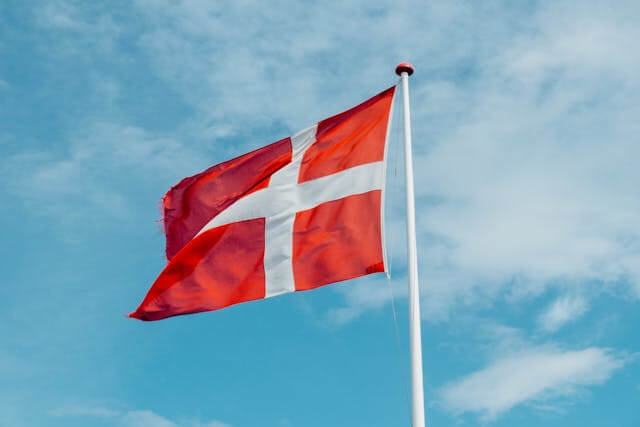
Denmark’s e-commerce landscape is thriving, with 88.5% of its 6 million population being internet users. The country boasts a remarkable GDP per capita of $61,947, indicating significant purchasing power.
Danish consumers are comfortable with online shopping, spending an average of $1,780 annually on e-commerce purchases.
Denmark consistently ranks high in ease of doing business indices. Its advanced logistics infrastructure ensures efficient product delivery.
The country’s digital-first approach is evident in its high smartphone penetration rate of 95%, facilitating mobile commerce growth.
E-commerce sales in Denmark are projected to reach $7.95 billion in 2024 and $12.33 billion by 2029. The most popular product categories include fashion, electronics, and home goods.
Pros
- High GDP per capita, translating to strong purchasing power
- Advanced digital infrastructure with high internet penetration
- Tech-savvy population comfortable with online shopping
- Strong logistics network for efficient deliveries
- Stable economy and business-friendly regulations
- High trust in online transactions and international sellers
- Growing mobile commerce market
Cons
- Small population size compared to other European markets
- High competition from local and international e-commerce players
- Stringent consumer protection laws and regulations
- High expectations for product quality and customer service
- Preference for domestic brands in some product categories
- Potential language barriers for non-Danish speaking sellers
- Higher marketing costs due to competitive advertising landscape
13. Italy

Italy boasts a population of 59.3 million, with 59% of Italians shopping online. The average online spending per shopper reaches $3.29k annually, indicating a significant market potential.
Internet penetration in Italy stands at 88%, providing a solid foundation for eCommerce growth. The country’s GDP per capita of $39,580 suggests a population with considerable purchasing power.
Italy’s ease of doing business score is 72.9 out of 100, reflecting a relatively favorable environment for entrepreneurs.
The Italian eCommerce market is projected to reach $64.18 billion in 2024 and is expected to grow to $103.10 billion in 2029. Mobile commerce is gaining traction, with 39% of online purchases made via smartphones.
Pros
- Large market size with 60 million potential customers
- High average online spending per shopper
- Strong eCommerce growth potential
- Tech-savvy consumer base
- Established logistics infrastructure
- Part of the European Union, facilitating cross-border trade
- Fashion-conscious market, ideal for apparel and accessories dropshipping
- Growing mobile commerce sector
Cons
- Competitive market with established local and international players
- Language barrier for non-Italian speakers
- Complex tax regulations and bureaucracy
- Preference for cash on delivery, which can complicate transactions
- Slower adoption of eCommerce compared to some other European countries
- Cultural emphasis on in-store shopping experiences
- Potential shipping delays due to geographic features (islands, mountains)
- Higher cost-per-click for Google Ads compared to some other countries
14. Spain
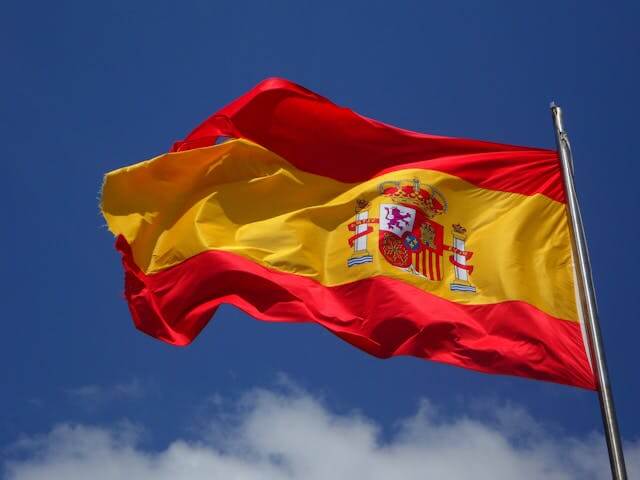
Spain’s eCommerce market is experiencing rapid growth. The country has a population of 47.9 million, with 76% of Spaniards shopping online.
The average online spending per shopper is $1,896 annually. Spain ranks 30th in the World Bank’s Ease of Doing Business index, indicating a favorable business environment.
Internet penetration in Spain stands at 96%, providing a large base of potential customers. The country’s GDP per capita is $28,496, reflecting strong purchasing power.
Spanish consumers are increasingly comfortable with cross-border purchases, opening opportunities for international dropshippers.
Spain’s eCommerce market size reached $35.50 billion in 2024 and $56.46 billion in 2029, with projections for continued growth. Mobile commerce is particularly strong, accounting for 55% of online transactions. This trend aligns well with global shifts towards mobile shopping.
Pros
- Large market with 47.4 million potential customers
- High internet penetration rate of 93%
- Growing eCommerce sector with a market size of €51.6 billion
- Strong mobile commerce adoption
- Strategic location for serving both Spanish and European markets
- Availability of local dropshipping suppliers
- Increasing comfort with cross-border purchases
- Relatively high average online spending per shopper
Cons
- Competition from established local and international retailers
- Need for Spanish language proficiency or translation services
- Adherence to EU regulations and consumer protection laws
- Potential for higher shipping costs compared to larger European markets
- Cultural nuances that may affect product selection and marketing strategies
- Seasonal fluctuations in consumer behavior, especially during summer months
- Possible logistical challenges in rural areas
15. Norway
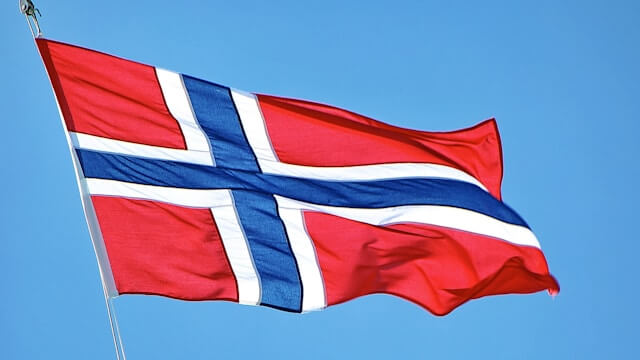
Norway boasts a population of 5.6 million, with an impressive 89% of Norwegians shopping online. The average online spending per shopper is approximately $2,100 annually, reflecting the country’s high disposable income.
Norway’s internet penetration rate stands at 99%, ensuring wide access to online shopping platforms.
The country’s eCommerce market is now projected to reach $8.70 billion in 2024 and is expected to $13.31 billion by 2029, growing at a steady rate of 8.88% annually.
Norway ranks 9th in the World Bank’s Ease of Doing Business index, making it relatively straightforward for foreign businesses to operate.
Norwegian consumers are known for their preference for quality products and willingness to pay premium prices. They also have a strong appetite for international brands, creating opportunities for dropshippers offering unique or specialized products.
Pros
- High average income and strong purchasing power
- Tech-savvy population with high internet penetration
- Strong preference for online shopping
- Openness to international brands and products
- Stable economy and political environment
- High trust in online payment systems
- English widely spoken, reducing language barriers
Cons
- Small population compared to other European markets
- High expectations for product quality and customer service
- Strict consumer protection laws and regulations
- Potential for high shipping costs due to geographical location
- Strong competition from local and established international retailers
- High tax rates may impact profit margins
16. Poland
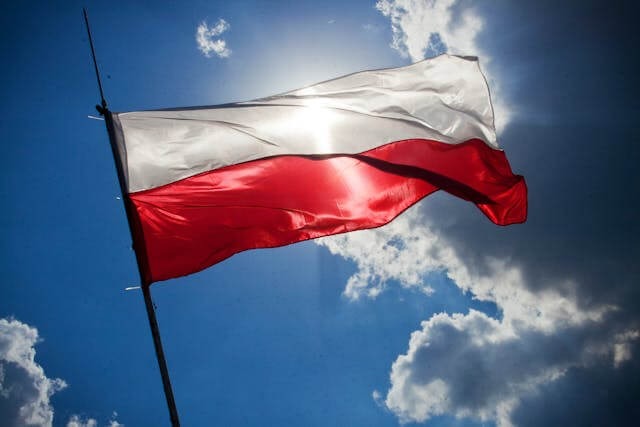
Poland’s e-commerce sector is experiencing significant growth. With a population of 38 million, the country has reached $22.82 billion in 2024 e-commerce market revenue and $36.13 billion expected by 2029.
The average revenue per user (ARPU) is projected to reach $1,597, indicating strong consumer spending power.
Poland’s internet penetration rate stands at 88%, with 30 million active internet users. The country ranks 40th in the World Bank’s Ease of Doing Business index, making it relatively business-friendly for dropshippers.
Fashion is the most popular online shopping category in Poland, followed by electronics and home goods. The country’s strategic location in Central Europe makes it an excellent gateway to other European markets.
Pros
- Growing e-commerce market with significant revenue potential
- High average revenue per user
- Large population of tech-savvy consumers
- Strategic location for accessing other European markets
- Relatively easy business environment
- Strong demand for fashion and electronics products
Cons
- Language barrier for non-Polish speakers
- Competition from established local e-commerce players
- Complex tax regulations for foreign businesses
- Preference for local payment methods
- Potential shipping delays from non-EU countries
- Currency fluctuations (Polish Zloty vs Euro/USD)
17. Singapore

Singapore’s eCommerce landscape is thriving, with a population of 5.8 million and an impressive 87% of residents shopping online.
The average online spending per shopper is US$1,445, indicating a strong willingness to make purchases through digital channels. Singapore’s internet penetration rate stands at 96%, ensuring a wide reach for online businesses.
The country’s GDP per capita is among the highest globally, at $88,447, reflecting the strong purchasing power of its residents. Singapore consistently ranks high in ease of doing business indexes, making it an attractive option for dropshippers.
eCommerce revenue in Singapore is expected to reach $8.40 billion by 2029, with a compound annual growth rate of 10.76%. This growth trajectory aligns well with global eCommerce trends, positioning Singapore as a lucrative market for dropshippers.
Pros
- High average online spending per shopper
- Advanced digital infrastructure
- Strong economy and high consumer purchasing power
- English-speaking population
- Efficient logistics and shipping networks
- Business-friendly environment with minimal trade barriers
- High smartphone penetration rate
- Growing eCommerce market
Cons
- Small population size compared to other Asian markets
- High competition in certain product categories
- Discerning consumers with high expectations for quality and service
- Relatively high cost of living, which may impact profit margins
- Strict regulations on certain product imports
- Cultural nuances that may affect marketing strategies
18. United Arab Emirates
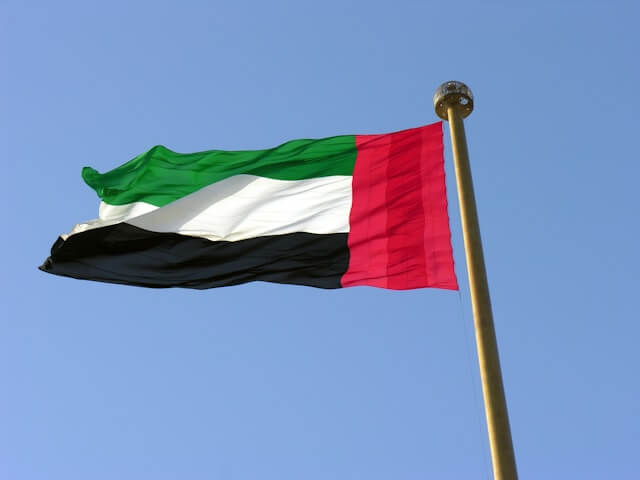
The UAE’s e-commerce market is experiencing rapid growth, with sales projected to reach $10.56 billion by 2029. The country has a population of 11 million, with an impressive 9.38 million online shoppers. This high internet penetration rate of 99% creates a fertile ground for dropshipping businesses.
The UAE boasts a high GDP per capita of $53,916, indicating strong purchasing power among consumers.
Dubai, in particular, stands out as a hub for e-commerce activities. The city’s advanced logistics infrastructure and strategic location make it ideal for businesses targeting both local and regional markets.
Pros
- High internet penetration rate (over 90%)
- Strong purchasing power with a high GDP per capita
- Advanced logistics infrastructure
- Strategic location for accessing Middle Eastern and African markets
- Tech-savvy population receptive to online shopping
- Government support for digital businesses
- Relatively easy business setup process for e-commerce
Cons
- Intense competition in the e-commerce space
- High customer expectations for product quality and service
- Potential cultural sensitivities to consider in marketing and product selection
- Strict regulations on certain product categories
- Language barriers (Arabic is widely spoken)
- High cost of living may impact profit margins
Frequently Asked Questions
Dropshipping across borders involves various considerations and factors that can impact your success. Let’s explore some common questions about choosing the right countries for your dropshipping business.
Can I Dropship In Any Country I Want To?
While dropshipping is a global business model, not all countries are equally suitable. Legal restrictions, shipping costs, and payment systems vary widely.
Some nations have strict import regulations that can complicate your operations. Others may lack reliable delivery infrastructure.
You’ll need to research each target market carefully. Consider factors like customs procedures and local consumer protection laws. Payment gateway availability can also limit your options in certain regions.
What Makes a Country Good for Dropshipping?
If you’re still confused on what’s the exact criteria that make a country good for dropshipping, then don’t worry as we’ve got your back:
High GDP Per Capita
We already discussed what GDP per capita is and why it matters in dropshipping.
So in a nutshell, the higher the GDP per capita of a country, the higher the conversion rate as more people are likely to spend their money shopping online.
Eagerness to Purchase
You should ideally target countries where people are heavy spenders and don’t think twice before purchasing a product.
In short, avoid countries like Russia since the people there frequently use AliExpress and can get cheaper offers.
So ideally, you want to target countries where potential buyers don’t pay too much consideration to the price as long as they’re getting what they want.
Online stores and social media marketing go hand in hand. This is why social penetration is also a major deciding factor on whether a country is worth dropshipping to.
The higher the social media usage the better, because it would become easier for you to interact with your audience.
Large Population
Although not as important, if other pieces fall into place, then a large population is always a bonus!
Targeting countries with a large population means that there would be more buyers for your product and that’s never bad news.
What Makes a Country Bad for Dropshipping?
How to decide which countries you need to avoid while dropshipping? Well, keep an eye out for the following red flags:
Low GDP Per Capita
Low GDP per capita indicates a lower economic output for each person.
This indirectly means that you may not make as much profit as you would have made in another country.
So it’s best to avoid dropshipping in countries that have a low GDP per capita.
Reluctance to Shop Online
There are still many people who feel reluctant to shop online. The reason for that could be due to bad past experiences, or the fear of getting scammed.
This is why before you start dropshipping, always check the percentage of people in a country that feel comfortable shopping online.
Lack of Internet Exposure
Online stores solely rely on social media platforms and other similar mediums for marketing.
If a person doesn’t use the internet, then how will they find out about your store, to begin with?
This is why social penetration is an important aspect to consider before you start dropshipping in a country.
Access to Cheaper Products
You should never target countries where people can easily access cheaper products.
And it does make sense because why would you spend more money on a product that you can easily purchase at a cheaper price?
GDP per capita is a key indicator of a country’s economic health and consumer spending power.
Higher GDP per capita often correlates with increased online shopping activity. Consumers in these countries typically have more disposable income to spend on non-essential items.
This metric can help you identify promising markets for your dropshipping business. For instance, Singapore’s strong economy makes it an attractive dropshipping destination despite its relatively small population.
Which Country Is Best to Sell on Shopify?
Several countries stand out as excellent markets for Shopify-based dropshipping stores.
The United States remains a top choice due to its massive eCommerce market and Shopify’s strong presence there. Canada and Australia also offer favorable conditions for Shopify sellers.
In Europe, the UK and Germany are popular choices. These countries have high internet usage rates and well-developed digital payment systems. France’s large eCommerce market also makes it an attractive option for Shopify dropshippers.
Summing Up: Expanding Your Business in the Best Countries to Dropship To
Choosing the right countries for dropshipping is crucial for your e-commerce success. The United States, United Kingdom, and Australia consistently rank among the best countries for dropshipping.
These markets offer high customer spending power and well-developed logistics networks.
France and Germany present exciting opportunities in Europe, with large populations and growing e-commerce sectors. Don’t overlook emerging markets like the UAE.
Remember, each country has unique challenges and advantages. Consider factors like shipping costs, cultural preferences, and local regulations when making your decision.
Ready to take your dropshipping business to the next level? Request a sourcing quote to find reliable suppliers for your chosen markets. With the right products and target countries, you’ll be well-positioned for dropshipping success in 2024 and beyond.
